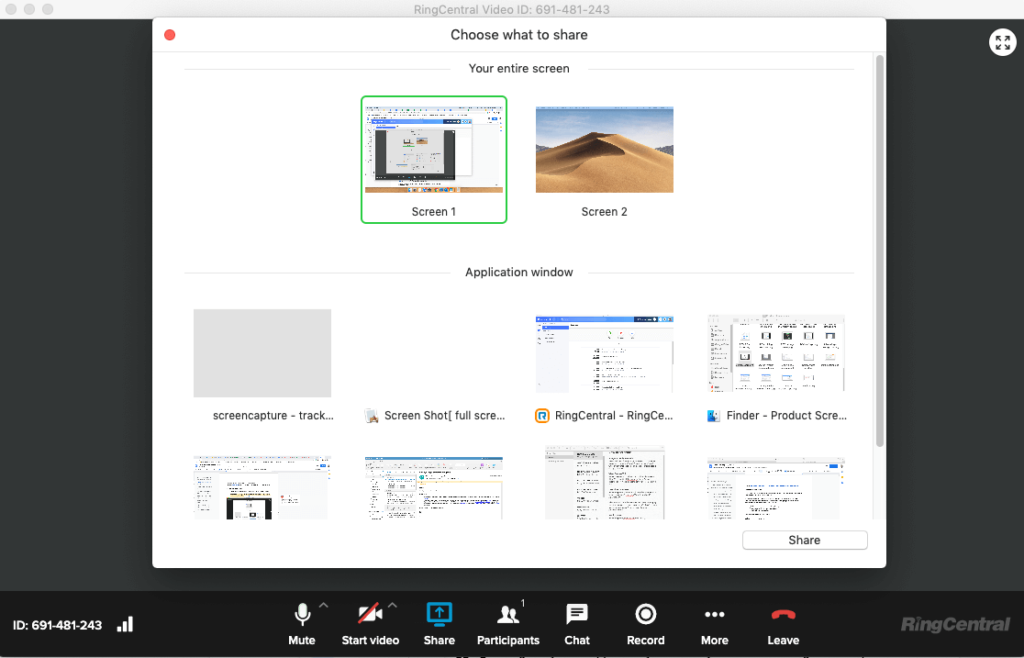Team meetings can be an amazing source of ideas and collaboration. Sometimes, getting the entire team together can lead to some of your best work. Each team member walks away feeling accomplished—like something really valuable was created.
Other times, team meetings are nothing but a time sink. Meeting participants are bored, confused, and wondering why couldn’t this have been an email?
It’s not always clear which meetings will be productive, and which will be duds. You might think a topic absolutely needs to be discussed in person, only to find there really isn’t that much to talk about.
Just guessing how to hold effective team meetings isn’t a great strategy. Holding a productive team meeting takes some thought and planning. Keep reading to learn:
- What team meetings you need to have
- What team meetings you can skip 🎉
- 4 tips to make any (well, almost any) team meeting better
🌟 Make sure every meeting is productive with our set of 5 free meeting agenda templates—each one tailored for a different type of meeting.
What team meetings do I need to have?
All meetings aren’t created equal. That’s if you decide to hold a meeting in the first place. You could opt to host a face-to-face meeting, an online meeting, or a group chat. You can even use a non-meeting alternative (which we’ll get to a bit later).
In fact, here are a few different meeting formats that you can try if your current team meetings aren’t as effective as you’d like:
Most meetings will fit into a few general archetypes. Here are the three meeting types that usually have to be meetings— you can’t easily forgo them in favor of an alternative (like a simple email).
1. Brainstorming sessions
Creative work can be hard, even if you’re a naturally creative person. When you try to come up with new ideas in a silo, it’s often difficult to make any new progress.
That’s why brainstorming sessions are important—and necessary. Although these meetings are typically less rigid than others (so they might feel like they’re not as productive), just getting ideas flowing and bouncing thoughts off of one another can ultimately result in some really great teamwork.
How to make brainstorming sessions more productive
If you and your team walk into every brainstorming session hoping to come up with an amazing new idea, you’re setting yourself up for failure. Putting too much pressure on the outcome can stifle creativity and cause team members to keep quiet out of fear of looking “wrong.”
To make your brainstorming sessions as productive as possible, keep them moving. Let people call out ideas and write every thought down—even if it’s one that clearly isn’t going to work.
Wait until the meeting is over to follow-up and sort through the “good” and “bad” ideas. The point of your brainstorming session isn’t to nail the outcome, it’s to get the juices flowing.
You can do brainstorming as a group relatively easily, even with team members in different countries. There’s some great video conferencing software out there which will let you do screen sharing, meaning you can see each other’s working documents in real time. Certain tools take this one step further, letting your team make annotations in a document live, right when you’re screen-sharing:

2. Onboarding meetings
Bringing in a new team member typically involves a lot of conversations, training, and meetups. You need to get familiar with your new employee, and they need to understand their role in the team (and company).
While some onboarding tasks can be done independently, it’s hard to truly welcome new team members and bring them up to speed without at least a few face-to-face (or video call) meetings.
How to create more productive meetings when onboarding
Have a plan. Before each onboarding meeting, whether it’s a one-on-one or with an entire team, set an intention or goal so everyone understands the purpose of the conversation.
This allows your new hire to immediately understand what is expected of them so they can focus on the right material. Plus, it makes sure your existing team comes prepared and the meeting can set off on the right foot.
Even if the purpose of the meeting is simply to get to know each other with icebreakers and have a bit of fun, make that clear in your agenda.
Learn how to use video conferencing for your online training sessions.
3. Kickoff meetings
Kicking off a new project or getting started with a new client involves a lot of information—and it often includes minute details or insights that are difficult to retain in emails or group chats.
Having an actual meeting for kickoffs also allows everyone to discuss expectations, goals, and ideas without cluttering a feed or creating an opportunity for important information to get lost.
Everyone can ask questions about their individual part in the new project, and with everyone in the same meeting, teams and departments can see how each individual fits within the larger goal.
Screen sharing can be super useful here. You can share your project, give status updates, notes, or presentations with everyone else while talking through it:

How to make kickoff meetings more productive
Give everyone the information they need upfront. A kickoff meeting shouldn’t only be about sharing information. It’s about expanding on that information to create plans for meeting expectations, providing deliverables, and distributing tasks.
To avoid wasting time, give each meeting participant all the information they’ll need before the meeting gets started. This means blasting out agenda items, slide decks, timelines, images, mockups, and more. Make sure you give everyone enough time to review and come to the meeting prepared.
By getting the information gathering session out of the way, everyone can show up with questions or ready to discuss the next team meeting agenda. You can jump right into the next weekly meeting without needing to wait for everyone to get brought up to speed.
What team meetings can I skip?
Knowing what team meetings you can go without can be just as important as knowing the meetings you need to have.
Here are two types of meetings that are almost always better off as emails (or chat messages).
Status updates
In an office setting, getting the status on a task or project is usually as simple as stopping by a team member’s desk to ask how things are progressing.
But for larger teams with distributed offices or work-from-home policies, quick in-person questions just aren’t going to happen.
It’s tempting to want to schedule meetings to check in on projects, and while it might be helpful if the project is particularly complicated with a lot of moving pieces, most status updates probably don’t need their own individual meeting.
How to replace status update team meetings
Have a collaboration hub that allows team members to offer a status update on their own time. This might be a project management system or a chat tool (like the RingCentral app) where you can shoot team members a quick message to check in:
Sending a message instead of having a meeting means your team doesn’t need to stop what they’re doing to tell you where they’re at. They can provide an update, ask questions, and even get quick feedback—and schedule a new team meeting if it seems like you really do have a lot to talk about—without taking a chunk of time out of their day.
Learn about other useful time management strategies.
Information-sharing meetings
You don’t need to gather everyone in a conference room to read a slide deck as a group. If all you’re doing is sharing information with your team, you can usually skip the meeting.
Unless the information you’re sharing is confidential, sensitive, or pressing, why not send information about new projects, products, services, or even just ideas directly to your team? Let them read and absorb the content in their own time.
How to replace information-sharing meetings
Consider what information you’re sharing and what kind of feedback or response you need. Do you need to make sure the content is absorbed and understood, or does your team just need to know it’s available?
Host your information in a shared space where your team can check it out in their own time. If you need feedback or you want to provide a channel for questions, concerns, or clarifications, try using your team communication tool.
Again, this is where the RingCentral app really shines. Not only can you message your team, you can share files with them directly in the conversation too.
4 tips to make any team meeting better
Regardless of the type of meeting you’re having, there’s always room for improvement. Here are four tips you can apply to any team meeting to make it run more efficiently and make the most of everyone’s time.
1. Create an agenda
Meeting agendas set the course for your time together. Agenda items create expectations, and let everyone know what you’re about to cover, thereby keeping the meeting on track.
Whether it’s a sales meeting agenda or a client meeting agenda, it should have clear objectives. What key talking points do you need to cover? What action items and updates do different team members need to provide? What work should be prepped before the meeting begins?
Make sure your agenda is a collaborative effort. Get feedback from other meeting participants, especially those that might have something to contribute, then drop your agenda in your team communication platform to gather feedback.
Did you know? The RingCentral app integrates with file storage platforms like Google Drive, Dropbox, or Box right into your conversation. If you need to get feedback quickly, just pop your agenda into the thread.
Once everyone has given their input, share the agenda with all your meeting participants (even external guests) so they can review and set expectations before the meeting begins.
What if you can’t create an agenda? Cancel the meeting. An effective team meeting should have a clear purpose with goals, expectations, and things to discuss and follow-up. If you’re struggling to come up with topics to cover, your meeting can probably be an email.
2. Choose your meeting medium
Face-to-face meetings are almost always the go-to for in-office teams. For remote workers, video meetings and conference calls have become the default.
And while both of these types of remote meetings have their place, they’re not always the most efficient. Do you really need your team crowded around a single laptop in a conference room to get the point across?
To make your meeting as efficient as possible, consider the different mediums on which you could host your team. Can it be a regular phone call? Can you get together over a virtual meeting? Many meeting apps will work on mobile devices—both Android and iOS—meaning you no longer need to call remote workers back into the office.
Try to work meetings into your team’s daily activities as seamlessly as possible. Before scheduling a meeting, think about what might need to be accomplished or what features you might need. If you need to share screens, work through a powerpoint presentation, or discuss in-depth project management and workflows, a phone call probably won’t cut it.
Similarly, you don’t all need to be on a video conference if you’re just chatting one-on-one with a team member.
3. Be picky about your invites
We’ve all sat in on meetings that made us question why we were even invited in the first place. The meeting starts, and team members start discussing something irrelevant to our tasks or projects, and we’re stuck waiting for the conversation to end so we can get back to what we’re doing.
It can be a time sink.
To avoid this, think about who really needs to be on each call. Who is important for the conversation, and who can be briefed after with a quick follow-up or meeting recap?
An alternative is to open meetings up for optional participants to decide if they want to join or not. By sending them an optional invitation with the meeting time and topics of discussion, you allow your attendees to decide if the meeting is relevant to them, or if they have the time to join. If they don’t have to be there, they should be able to skip the meeting and get the details later.
Reducing the voices to just the people who need to be in the conversation can also prevent your team from losing focus and make sure you stay on topic. When you can narrow in and get things done, you’re guaranteed more productive meetings.
4. Walk away with solutions, goals, and next steps
Meetings need to move your projects forward and bring you closer to completing that next step. Make sure everyone is walking away from meetings knowing what to do next.
A summary of the meeting, including takeaways, task owners, and any files shared, can give everyone a recap and make sure you’re all on the same page. It also gives you clear goals to aim for before the next meeting.
But to make sure nothing gets lost, a task management tool is a must-have. It acts as your checklist of things to do, and also lets you assign action items to people and keep track of project statuses. If you’re using RingCentral’s app, this feature is built right in!

Don’t settle for unproductive team meetings
Your team should never walk away from a meeting wondering why they just wasted their time. But every team’s needs are unique.
Maybe your team wants a meeting agenda a day in advance, or maybe they just want to breeze through it five minutes before. Maybe they love your video conferencing app and prefer video calls for everything, or maybe they hate the thought of being on camera.
After each team meeting, pay close attention to how your team is feeling, if they’re engaged, or what tasks they follow up with. When you can find their unique preferences, you can start to tailor your meetings to be more productive for them.
Updated Mar 13, 2025














